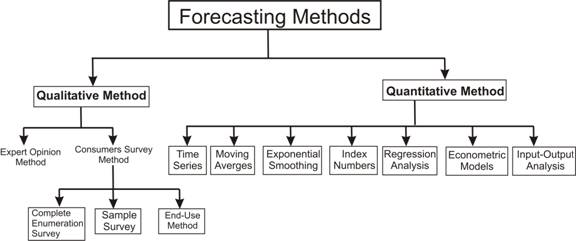





Published on Nov 30, 2023
The firm must plan for the future. Planning for the future involves forecasting. A forecast is an estimation or prediction about situations which are most likely to occur in near or distant future .
No businessman can afford to ignore forecasting if he wants to thrive and prosper in his business. The firm has to forecast the future level of demand for its product under different possible circumstances; such as prices, competition, promotional activities and general economic activity. Similarly forecasting will be necessary with reference to costs under changing conditions of availability of raw materials and their respective prices, changing technology, wage rates, labour training and capital acquisition programmes. Forecasting does play a key role in managerial decisions and hence forecasting is emphasized in the study of managerial economics. The objective of business forecasting is to minimize risk and the margin of uncertainty in business.
Forecasting could be done in the following ways:
1) Active and Passive
2) Total Market and Market Segmentation
3) Company Forecast and Industry Forecast
4) Short Term and Long Term Forecasting
Techniques of Demand Forecasting
Many techniques are available that can be used in forecasting economic variables. Some forecasting techniques are quantitative, others are qualitative. When quantitative information is not quite available then qualitative technique is to be relied upon for getting the required forecasts.

There are, as such, two approaches to demand forecasting . First is to obtain information about the intentions of the spenders through collecting experts' opinion or by conducting interviews with the consumers. Second is to use past experience as the guide and using or projecting the past statistical relationships to obtain the expected level of future demand. The first method is also considered to be qualitative and is mostly used for short-term forecasting; whereas the second method is quantitative and is used for long-term forecasting. We can forecast the demand for existing product by using any one or even mix of the above methods, but to forecast demand for new product we have to use survey method only because the new product has no past or historical data to offer.
• Accuracy : Different methods of forecasting yield accurate results under different circumstances. An appropriate choice of method will ensure more accurate results.
• Reliability : A time tested method increases the reliability of that method. If a particular method was used to give reliable result in the past then the same method can be reused for forecasting future.
• Economical : Although complete enumeration method of forecasting demand would perhaps yield more accurate result yet it would be a very expensive method. The team conducting forecast cannot afford to discuss the economic aspect of forecasting and therefore should select the least expensive of the methods which would give some reliable forecasts.
• Data availability : Forecasting is made on the basis of the availability of primary or secondary data and therefore the required data should be easily available preferably in the required form.
• Flexibility : As the managerial economist is faced with a number of uncontrollable variables, flexibility in using them would be a necessary condition for a good forecast.
• Durability : The forecast that are made should be valid in the long run because there is a certain time lag in conducting the forecasts and the period when the product is likely to enter the market.
• Simplicity : Depending upon the objective the researcher should apply a simple and straightforward method of forecasting.
Although the opinion surveys are simple and straightforward, there is an element of subjectivity involved.
As the surveys are expensive and time consuming there is a tendency to limit the sample of the consumers. The sample selected may not be very representative.
Although the Time Series Analysis is used in forecasting cyclical fluctuations, yet we cannot be sure about such forecasts because there is no regular pattern of a business cycle. Different phases of the cycle may have different intensities and timings which can make the forecast go astray.
Although efforts are made to use scientific method in forecasting yet there is bound to be difference between field experiments and experiments conducted in laboratories.
Afterall demand forecasting depends on the responses from the human beings but the tastes and preferences of human beings keep changing. And thus the application of even the quantitative or statistical models may not give us very reliable forecast. Depending upon the resources and time the forecaster must use more than one method to cross check the accuracy of his forecast.
Despite the limitations associated with forecasting, we all agree that forecasting by some technique or the other is essential. No businessman can afford to do without it. The question faced is not whether he should forecast but rather how he should forecast. Good forecasting essentially constitutes the core of business management.